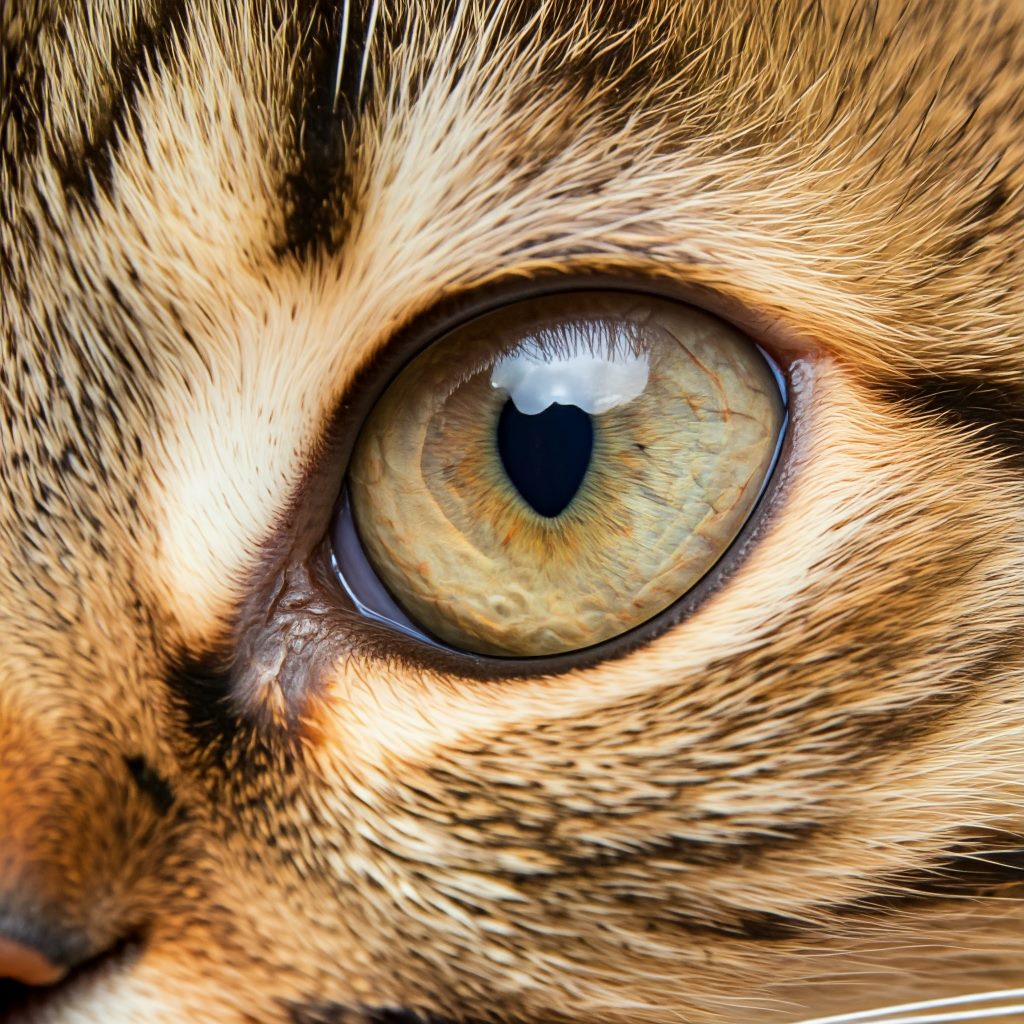
Eye boogers are caused by a combination of moisture and dead skin cells. When your cat sleeps, his eyelids partially close, allowing some air to get in but not enough to dry out the eye completely. The moisture from tears mixes with the oils from sebaceous glands at the base of hair follicles — which are located near the eyes — forming an oily substance called meibum. This mixture dries into crusty gunk on the surface of your cat’s eyelids.
This process is normal for all mammals (including humans). However, cats develop more eye boogers than other pets because they have large tear ducts that run down their cheeks and into their mouths. These ducts allow more moisture to reach the surface of their eyes compared to dogs or other animals with smaller tear ducts.
The main reason why cats get eye boogers is because they have poor tear production. Tear production is one of the functions of the lacrimal gland — it produces tears that lubricate your eyes and flush away dirt and debris. However, cats don’t produce enough tears to keep their eyes clean, which means that excess oil builds up on their faces instead of being washed away by tears.
Another reason why cats get eye boogers is because they have long eyelashes and facial hair that helps trap dirt, dust, and other particles in their eyes. If these particles aren’t flushed away from your cat’s eyes by tears, they can build up into hard deposits called conjunctival concretions.
Are Cat Eye Boogers Normal?
Cat eye boogers are normal. They are a common occurrence in cats, especially when they go from being indoor pets to outdoor cats.
Cat eye boogers are usually just a mild annoyance, but they can also be a sign of something more serious.
The inner corners of your pet’s eyes contain glands that produce oil. This oil is released onto the fur around your cat’s eyes to help keep them moist and help prevent infections. The excess oil can collect at the inner surface of the eyelid and then fall into the eye.
Cats typically get cat eye boogers due to allergies or an infection in the nose. Allergies are often triggered by a change in diet or environment. For example, if you move into a new home with new furniture, drapes and carpeting, your cat may develop allergies as they adjust to their new surroundings.
If you notice cat eye boogers, there is no need to worry unless they are accompanied by any other symptoms like redness or discharge from the eyes.
When Should I Worry About My Cats Eye Boogers?
Eye boogers are a normal part of life for cats, but when they’re not easy to clean out, it could be a sign of an eye infection.
Cats eye boogers are simply a build up of mucus in the corner of your cat’s eye. They may be clear or yellowish in color and can look like small gobs of glue. When you touch them, they may stick to your finger.
It’s normal for cats to have some sort of discharge from their eyes at times. This doesn’t necessarily mean that there’s an infection or other health issue. It’s just something that happens as part of being a cat!
In most cases, eye boogers are nothing to worry about. They’re made up of oil, dead skin cells, and other debris that gets stuck in your eyelashes or eyes. But some people have them more often than others, especially if they have allergies or dry eyes.
If you think you might have a medical condition that causes eye boogers, it’s important to see a doctor right away. Here are some signs that you should be worried about your cat’s eye boogers:
- The color of your cat’s eye boogers is abnormal
- You’ve noticed an unusual amount of eye discharge or crustiness around your cat’s eyes
- Your cat has been rubbing its eyes excessively
What Do You Do When Your Cat Has Eye Boogers?
When your cat has eye boogers, it can be a scary thing to see. You want to help your cat, but you don’t want to hurt them. So how do you know how to help a cat with eye boogers?
The best way to prevent eye boogers is by cleaning your cat’s eyes regularly with a warm damp cloth. This will remove any debris before it can cause any damage to your pet’s eyesight. You can also use eye drops to help lubricate his corneas so that they don’t dry out.
Make sure your cat is healthy. If your cat has a cold or upper respiratory infection, you can’t treat eye boogers. These infections cause the buildup of mucus in the eyes, so it’s best to wait until your cat is healthy again before trying to remove them.
Use a cotton swab dipped in warm water to gently remove the eye boogers from around the eyes. Don’t try to use forceps or tweezers for this purpose because they can injure your pet’s eyes.
Ask your veterinarian about any medications that may help dry up the mucus and make it easier to remove from the eyes. Some medications may also help reduce inflammation and ease discomfort caused by eye boogers.
Is Cat Eye Discharge Serious?
Cat eye discharge is a very common condition, but it can be alarming to see. Cat eye discharge is caused by a buildup of mucus, or tears, in the eye.
Usually, cat eye discharge is nothing to worry about. It can be caused by an allergy or infection. The discharge may also be due to dry eyes or irritants such as dust and pollen.
The most common cause of cat eye discharge is an allergic reaction to something in the environment or something your cat has just eaten. The most common causes are food allergies (such as chicken), environmental allergies (like dust) and fleas.
The vast majority of cats will have some form of eye discharge from time to time. This is because the eyes are moist and warm environments, which make them ideal breeding grounds for bacteria and fungi. In addition, cats’ tear ducts are connected directly to their nasal cavities, so any foreign particles that are inhaled can easily get into their eyes and cause irritation and infection.
The most common types of cat eye discharge are caused by an infection or allergies. Cats can have eye infections for a variety of reasons, including poor dental health and poor diet.
Allergies may cause a watery discharge that can be clear or yellowish in color. Some cats will also experience tearing and inflammation around their eyes during allergy season due to pollen, dust mites and other allergens in the air.
If your cat has been diagnosed with an infection or other problem, your veterinarian can recommend the best treatment options for you and your pet.
Why Is Yellow Stuff Coming Out of My Cat’s Eye?
In cats, yellow eye discharge is often a sign of conjunctivitis (inflammation of the conjunctiva). The conjunctiva is the thin membrane that covers the sclera (the white part of your cat’s eye) and inner surface of the eyelids. It helps prevent drying and other damage to these structures.
Cats can have some pretty strange stuff coming out of their eyes. It can be a sign of infection, but it can also be something that’s normal and just needs time to clear up.
Here are a few things to consider if you see yellow stuff coming out of your cat’s eye:
1. Yellow stuff might be pus or mucus.
2. Yellow stuff can also be caused by a tear duct infection or irritation.
3. If the discharge is thick, then it could be pus or mucus mixed with blood from an injury to the eye.
If your cat has an infection or inflammation in his eyes, then you may see more discharge than usual coming out of his eyes. This can occur if he has an eye infection, conjunctivitis, corneal ulcer or blepharitis (inflammation of the eyelids).
If your cat has an upper respiratory infection or other condition that causes him to produce a lot of mucus, then this can also cause more discharge than usual to drain out through his tear ducts.
If your cat is experiencing this problem, it will be important for you to take him to see your veterinarian immediately so that he can be properly diagnosed and treated.

